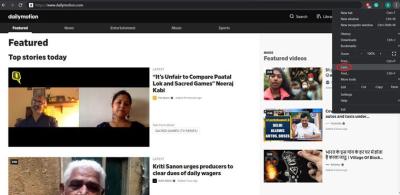If you're a musician or composer looking to dive into the world of licensing, Getty Images presents a golden opportunity. With its massive library of stock content, including music, Getty has established itself as a go-to platform for creatives seeking high-quality assets. In this blog post, we’ll walk you through the process of submitting your music to Getty Images and help you understand their needs and preferences. Ready to make your mark? Let’s get started!
Understanding Getty Images and Their Needs

To successfully submit your music to Getty Images, it's essential to first understand what the platform is all about and what they seek from artists like you.
Who are Getty Images?
Getty Images is a leading global provider of visual content and media, serving a vast array of industries, including advertising, marketing, and film production. They offer a comprehensive collection of images, videos, and music that creatives can license for various projects. By curating high-quality content, Getty Images has become a trusted source for professionals who need to elevate their work with visually and audibly compelling assets.
Their Music Library:
Getty Images features a tailored music library that consists of pre-cleared, high-quality tracks, available for licensing. This library caters to a range of projects, including commercials, corporate videos, TV shows, and films. Understanding what fits into this library is crucial for submission.
What Does Getty Need?
Here are some key points to keep in mind about Getty's requirements and preferences when it comes to music submissions:
- Quality over Quantity: They value high production quality. Make sure your tracks are professionally mixed and mastered.
- Universal Appeal: Music that is versatile and can fit various projects is highly sought after. Think about how your composition can adapt to different themes.
- Originality: Unique sounds and styles will stand out. Aim to bring something fresh to the table.
- Licensing Clarity: Ensure that your work is entirely original and free from any copyright issues; they want to avoid licensing complications.
By aligning your submissions with Getty Images' needs and understanding their operations, you’ll improve your chances of being featured in their extensive library.
Also Read This: How to Remove the Getty Images Watermark with a Step-by-Step Guide
Preparing Your Music for Submission

When it comes to submitting your music to Getty Images, preparation is key. You want to make sure that your tracks shine as brightly as your talent does! Here’s how to get started:
- Know Your Audience: Understand who might be using your music. Getty Images serves a variety of clients, including filmmakers, advertisers, and educators. Tailoring your music to their needs could increase your chances of getting noticed.
- High-Quality Recording: It’s essential to ensure your music is recorded and produced to the highest standards. Use professional equipment if possible, and consider hiring a sound engineer if you're unsure about your skills. A polished track can make a huge difference in its appeal.
- Metadata is Important: Properly tagging your music with relevant metadata is crucial. This includes the title, genre, mood, and any instrumental or vocal details. Clear metadata helps clients find your music quickly and easily.
- Prepare Different Versions: Consider creating alternate versions, such as instrumental cuts or shorter edits. Different clients might need different lengths or arrangements of the same track, so providing options can be beneficial.
- Check Licensing Information: Be clear about your licensing. Make sure you know whether you want to offer exclusive or non-exclusive rights and what that entails for potential clients.
Taking the time to prepare your music properly can set you apart from the competition and gives you the best chance of success with Getty Images.
Also Read This: Finding Free Getty Images for Your Projects
The Submission Process Explained

Now you’ve got your music ready; it’s time to dive into the submission process. It may seem overwhelming, but following these steps can make it a breeze!
- Create an Account: First things first—head over to the Getty Images website and create an account. If you’re already an existing contributor, log in to access the submission platform.
- Submit Your Music: Next, navigate to the music submission section. Here, you can upload your prepared tracks. Ensure that you adhere to Getty's file format requirements, typically MP3 or WAV files.
- Complete Metadata Fields: As you upload, you’ll be prompted to fill in the metadata fields we discussed earlier. Pay attention to this step, as accurate and thorough metadata enhances your music's visibility.
- Select Your Licensing Terms: During the submission, you’ll choose your licensing options. Make decisions based on your comfort level in sharing your music and potential future earnings.
- Review and Submit: Before hitting that submit button, take a moment to review everything. Check for typos in your metadata and ensure all files are the correct format. Once you’re satisfied, submit your music and wait for feedback!
Don’t forget that patience is essential! The review process may take some time, but with a well-prepared submission, you’re setting yourself up for success.
Also Read This: Selling Success: How to List and Sell Your Product on Flipkart
Benefits of Submitting Music to Getty Images
Submitting your music to Getty Images presents a plethora of advantages that can significantly boost your career as a musician or composer. Here are some compelling benefits:
- Wider Exposure: Getty Images is a globally recognized platform. When you submit your music, you open the door to a vast audience that you couldn't reach on your own. Your work could be featured in videos, commercials, and documentaries all over the world!
- Monetary Opportunities: By licensing your music through Getty Images, you can earn royalties every time your music is used in projects. This creates a continuous revenue stream, making it a worthwhile investment of your time and talent.
- Professional Credibility: Being associated with a prestigious company like Getty Images adds credibility to your portfolio. This can enhance your reputation and attract other commercial opportunities.
- Networking Opportunities: Through Getty Images, you might connect with industry professionals, such as filmmakers, advertisers, and media producers. This could lead to collaborations that you might not find elsewhere.
- Feedback and Growth: Submitting your work for licensing means it's being evaluated by professionals in the industry. Their feedback can be a valuable asset for your growth as an artist.
Also Read This: How to Cite a Photo from Getty Images
Tips for Success in Music Submission
Now that you know the benefits, how do you ensure your music submission stands out? Here are some essential tips:
- Understand the Market: Do your research! Familiarize yourself with the type of music that Getty Images typically accepts. Tailoring your submissions to fit their needs can dramatically increase your chances.
- High-Quality Production: Always submit top-notch recordings. The quality of your music reflects your professionalism. Invest in good mixing and mastering to enhance your tracks.
- Personal Branding: Build a clear identity as an artist. Have a professional website and social media presence where potential clients can learn more about you and your work.
- Be Original: Creativity is your currency. Offer unique compositions that stand out. Avoid clichés and don't be afraid to take creative risks in your music.
- Follow Submission Guidelines: Each submission platform has specific guidelines. Make sure you read and adhere to them to avoid having your submission rejected.
By keeping these tips in mind, you can put your best foot forward when submitting your music to Getty Images and potentially reap all the rewards that come with it!
How to Submit Music to Getty Images: Opportunities for Musicians and Composers
Submitting your music to Getty Images can provide excellent opportunities for musicians and composers looking to license their work for various media projects. Getty Images, a leading provider of visual content, also offers a wide range of audio tracks for use in films, commercials, and online content. Here's a step-by-step guide on how to effectively submit your music to Getty Images.
Step-by-Step Submission Process
- Create an Account: Begin by visiting the Getty Images website and registering for an account. This will allow you to manage your submissions and track their performance.
- Review Submission Guidelines: Before submitting, familiarize yourself with Getty Images' specific guidelines for audio submissions. Pay close attention to their quality, format, and licensing requirements.
- Prepare Your Music: Ensure that your tracks are professionally recorded and mixed. Submit high-quality audio files, typically in WAV or AIFF format, as these are preferred.
- Include Metadata: Add relevant metadata to your tracks. This includes details such as genre, mood, instrumentation, and suitable usage scenarios. This information helps potential buyers in finding your music.
- Submit Your Music: Use Getty Images’ submission portal to upload your tracks along with the accompanying metadata.
Additional Tips for Success
- Network with other composers and musicians in the industry to gain insights.
- Stay updated on current trends in media to tailor your submissions accordingly.
- Consider creating a portfolio of your work on social media or a personal website to showcase your style and range.
By leveraging the platform offered by Getty Images, musicians and composers can not only gain exposure but also find meaningful opportunities to monetize their artistry through licensing agreements.
In conclusion, submitting music to Getty Images is a viable pathway for musicians and composers to showcase their work and connect with potential clients. By following the outlined steps and tips, you can increase your chances of success in this competitive marketplace.
 admin
admin








